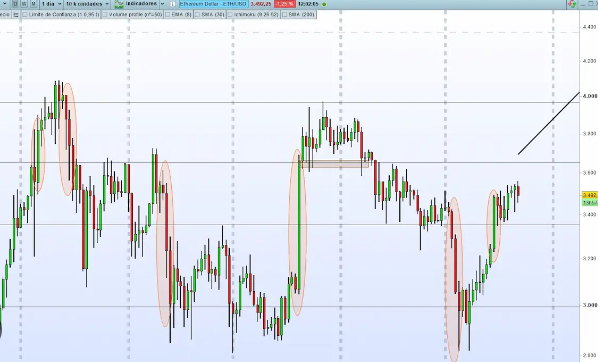How to Trade Forex Using the Hurst Exponent
Trading forex using the Hurst exponent can be a useful approach for identifying trends and potential reversals in the market. The Hurst exponent is a mathematical algorithm that measures the long-term memory of a time series, such as forex price movements. Here are some steps to consider when trading forex using the Hurst exponent:
- Understand the Hurst Exponent: Familiarize yourself with the concept of the Hurst exponent and how it is calculated. The Hurst exponent ranges from 0 to 1, with values closer to 1 indicating a trending market, values around 0.5 suggesting a random walk, and values below 0.5 indicating mean reversion or reversals.
- Gather Historical Price Data: Obtain sufficient historical price data for the forex pair you wish to analyze. The more data available, the more reliable your Hurst exponent calculation will be. Ensure the data spans a reasonable timeframe to capture various market conditions.
- Calculate the Hurst Exponent: Apply a suitable algorithm or software to calculate the Hurst exponent for the forex pair. There are several mathematical techniques available, such as rescaled range analysis (R/S analysis) or the Detrended Fluctuation Analysis (DFA). These calculations can be complex, so utilizing specialized software or tools can simplify the process.
- Interpret the Hurst Exponent: Analyze the calculated Hurst exponent to determine the market’s trend characteristics. If the Hurst exponent is above 0.5, the market is considered to have a trending behavior, indicating potential continuation of the trend. Conversely, if the Hurst exponent is below 0.5, the market tends to exhibit mean-reverting behavior, suggesting a potential reversal.
- Identify Entry and Exit Points: Once you have determined the market’s trend behavior using the Hurst exponent, use this information to identify potential entry and exit points for your forex trades. If the Hurst exponent suggests a trend, look for pullbacks in price to join the trend. If the Hurst exponent suggests a mean-reversion pattern, consider entering trades when prices deviate significantly from their mean.
- Combine with Other Analysis Techniques: To increase the accuracy of your trading decisions, consider integrating the Hurst exponent analysis with other technical analysis tools and indicators. This may include moving averages, support and resistance levels, or momentum indicators, which can provide additional confirmation signals.
- Practice Risk Management: As with any trading method, it is essential to manage your risk effectively. Set appropriate stop-loss levels and adhere to them to limit potential losses. Additionally, consider implementing proper position sizing and risk-reward ratio to ensure a favorable risk management strategy.
Remember, while the Hurst exponent can provide valuable insights into the market’s trend, it is crucial to combine it with other analysis techniques and consider the broader market context before making trading decisions. Regular practice, ongoing learning, and refining your strategy will help you become proficient in trading forex using the Hurst exponent.
Mastering the Hurst Exponent can significantly improve your forex trading edge by identifying persistent market trends.
While most traders focus solely on technical indicators, understanding cyclical patterns through this mathematical tool offers unique advantages.
Many successful traders diversify their analytical approaches, much like seasoned gamblers research various online casino sites before placing strategic bets.
Applying the Hurst Exponent requires patience and practice, but the payoff in market prediction accuracy is substantial. Remember that consistent backtesting remains crucial when implementing any new trading methodology in live markets.
Proper risk management combined with these advanced techniques can help stabilize your portfolio during volatile periods. FX-Navi’s comprehensive guides make complex concepts accessible even for traders transitioning from intermediate to advanced levels. Always verify your calculations across multiple timeframes to confirm Hurst Exponent signals before executing trades.














1 comment